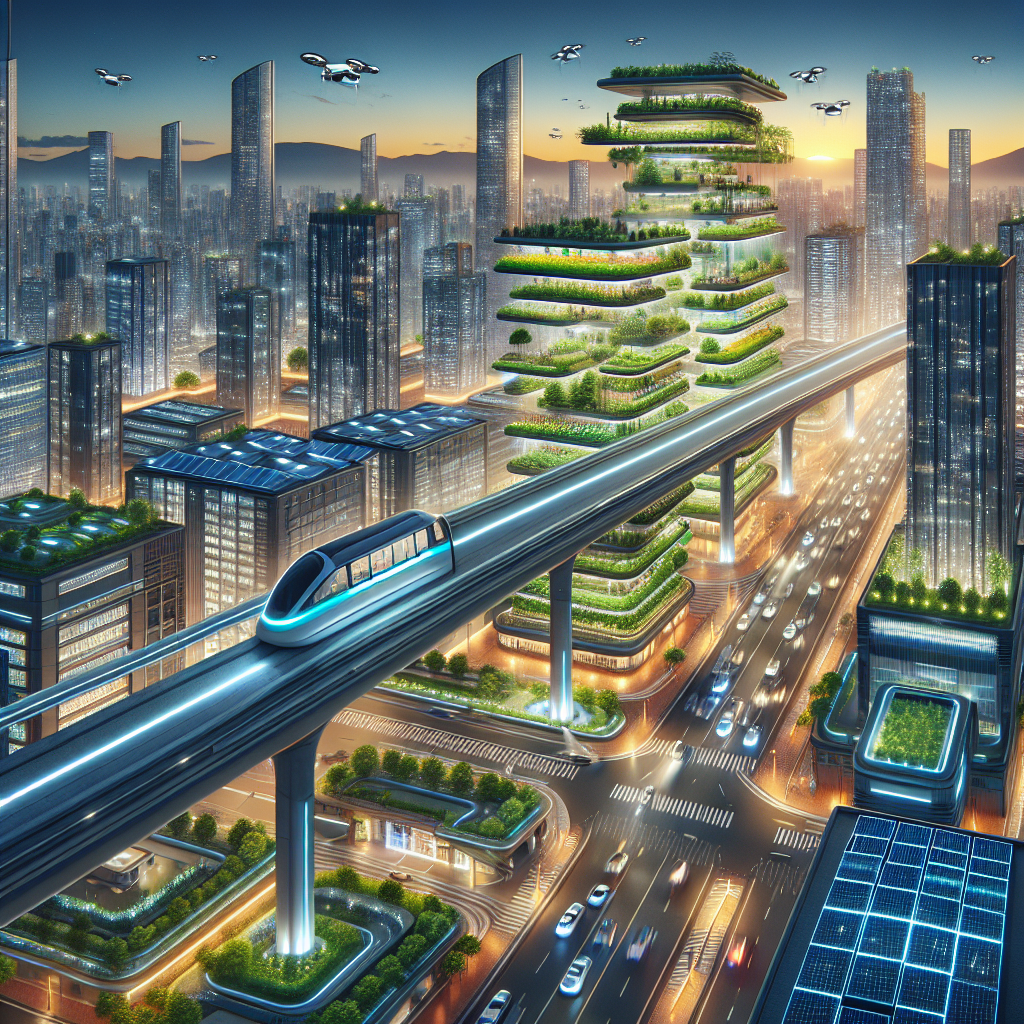Smart Cities 2.0: How AI is Driving Sustainable Urban Growth
Introduction
The concept of smart cities has been gaining momentum in recent years, as urban populations continue to grow and cities face increasing challenges in terms of sustainability, efficiency, and quality of life. Smart cities leverage technology and data to improve the way cities are planned, managed, and used, with the goal of creating more livable, efficient, and sustainable urban environments.
One of the key technologies driving the evolution of smart cities is artificial intelligence (AI). AI has the potential to revolutionize the way cities are run, by enabling better data analysis, predictive modeling, automation, and decision-making. In this article, we will explore how AI is being used to drive sustainable urban growth in the era of Smart Cities 2.0.
AI in Smart Cities
AI is being used in a variety of ways to make cities smarter and more sustainable. One of the key applications of AI in smart cities is in the area of transportation. AI-powered systems can analyze large amounts of data from traffic sensors, cameras, and other sources to optimize traffic flow, reduce congestion, and improve public transportation services. For example, AI algorithms can predict traffic patterns and adjust traffic signal timings in real-time to reduce congestion and improve traffic flow.
AI is also being used to improve energy efficiency in buildings and infrastructure. AI-powered systems can analyze energy consumption data, identify inefficiencies, and recommend ways to reduce energy usage. Smart buildings equipped with AI technology can automatically adjust lighting, heating, and cooling systems to optimize energy usage and reduce costs. AI can also be used to optimize waste management and recycling programs, by analyzing data on waste generation and collection patterns to improve efficiency and reduce environmental impact.
AI is also being used to enhance public safety and security in smart cities. AI-powered systems can analyze data from surveillance cameras, social media, and other sources to detect and prevent crime, monitor crowds, and respond to emergencies more effectively. For example, AI algorithms can analyze video feeds to detect suspicious behavior or identify missing persons, and alert law enforcement agencies in real-time.
In addition to these applications, AI is being used in smart cities to improve healthcare, education, and other public services. AI-powered systems can analyze healthcare data to identify trends, predict disease outbreaks, and personalize treatment plans. AI can also be used to improve education outcomes by providing personalized learning experiences for students, analyzing student performance data, and identifying areas for improvement.
Challenges and Opportunities
While AI has the potential to revolutionize smart cities and drive sustainable urban growth, there are also challenges and risks that need to be addressed. One of the key challenges is ensuring that AI systems are transparent, accountable, and unbiased. AI algorithms can be prone to bias and discrimination, especially when trained on biased data or designed without proper oversight. It is essential to ensure that AI systems are developed and deployed in a way that is fair, ethical, and respects the rights and privacy of citizens.
Another challenge is ensuring that AI systems are secure and resilient to cyber threats. AI-powered systems in smart cities are vulnerable to cyber attacks, which could have serious consequences for public safety, privacy, and infrastructure. It is essential to implement robust cybersecurity measures to protect AI systems from malicious actors and ensure the integrity and reliability of smart city infrastructure.
Despite these challenges, AI also presents opportunities for smart cities to drive sustainable urban growth and improve quality of life for residents. AI can help cities to optimize resource allocation, reduce waste, and improve efficiency in the delivery of public services. AI can also enable cities to become more resilient to climate change, by analyzing data on environmental risks, predicting extreme weather events, and implementing adaptive strategies to mitigate their impact.
FAQs
Q: What are some examples of AI applications in smart cities?
A: Some examples of AI applications in smart cities include traffic management systems, energy efficiency programs, public safety and security initiatives, healthcare analytics, and education programs.
Q: How can AI help to drive sustainable urban growth?
A: AI can help to drive sustainable urban growth by optimizing resource allocation, reducing waste, improving efficiency, and enhancing the delivery of public services. AI can also enable cities to become more resilient to climate change and other environmental risks.
Q: What are some of the challenges of using AI in smart cities?
A: Some of the challenges of using AI in smart cities include ensuring transparency, accountability, and fairness in AI systems, addressing bias and discrimination, and ensuring cybersecurity and resilience to cyber threats.
Q: What are some of the opportunities of using AI in smart cities?
A: Some of the opportunities of using AI in smart cities include optimizing resource allocation, reducing waste, improving efficiency, enhancing public services, and promoting sustainability and resilience to climate change.
Conclusion
In conclusion, AI is driving sustainable urban growth in Smart Cities 2.0 by enabling better data analysis, predictive modeling, automation, and decision-making. AI is being used in a variety of ways to make cities smarter and more sustainable, from optimizing traffic flow and energy efficiency to enhancing public safety and security. While there are challenges and risks associated with using AI in smart cities, there are also opportunities to drive sustainable urban growth and improve quality of life for residents. By harnessing the power of AI, smart cities can become more efficient, resilient, and livable, paving the way for a more sustainable urban future.

